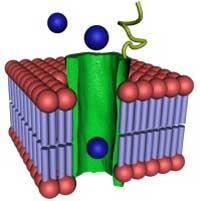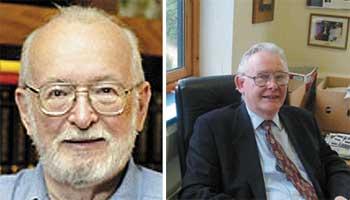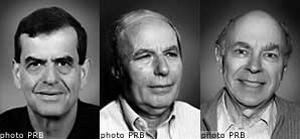Nobel Prize in Chemistry for two research on cell channels
2003/10/08 Roa Zubia, Guillermo - Elhuyar Zientzia

The outer membrane of cells, in addition to protecting themselves, has the function of communicating with the environment, since many substances must enter and exit. For this purpose, it uses proteins in the form of channels. These proteins are membrane-integrated structures that give access to or solution to certain substances. These channels are specific, that is, there is a type of channel for each type of substance that is going to enter or exit.
This year's Nobel Prize winners in Chemistry have investigated some of these channels, water and ions. It is no wonder the importance of channels in the field of biochemistry. Understanding the mechanism that introduces water into cells is fundamental, since all body organs must control the flow of water. For example, the knowledge of these proteins is essential to understand, among other things, the functioning of the kidney and the heart.
Although they are very important proteins, water channels were not identified until 1988. The search was long because the biochemists knew that there had to be those channels, but no one found them. The American Peter Agre managed to isolate one of them for the first time. This year he will receive the Nobel Prize for this work.

However, the channels of the ions are known much earlier. They are many, since many mineral salts intervene in biological processes, specifically in the cell membrane. For example, they intervene in some processes related to the cell's energy production and the transmission of signals between neurons. Thus, calcium, potassium, protons and sodium are one of the most abundant ions that cross the membrane. American Roderick MacKinnon worked with potassium transport channels and in 1998 he discovered the exact spatial structure of this protein.
The research of the cell membrane is, therefore, the basis of the Nobel Prize in Chemistry. Perhaps in the section of physiology it could be expected that a work of this type would be awarded, but those of the Nobel Foundation have decided to do so this year; the Nobel Prize for Medicine has awarded physicists and that of Chemistry to biochemicals.

Gai honi buruzko eduki gehiago
Elhuyarrek garatutako teknologia





